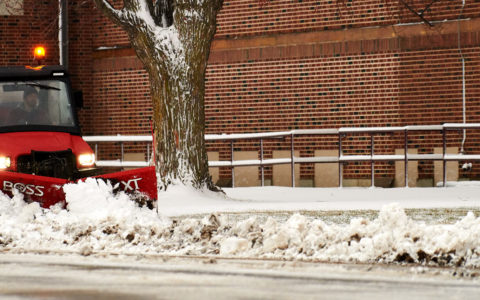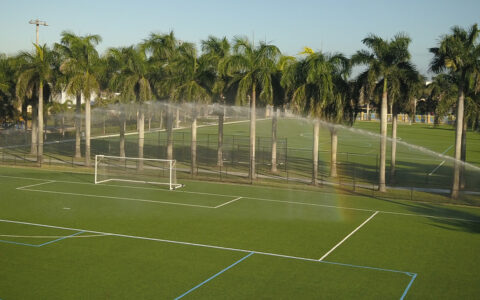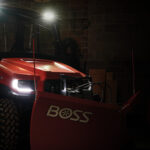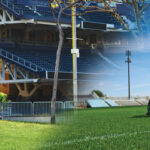Little League World Series
Every summer since 1959, Little League teams from all over the world converge on Williamsport, Pennsylvania, to compete in the prestigious Little League World Series. The Little League World Series complex is home to the Howard J. Lamade Stadium, where the final rounds of the Little League World Series are held, and the Little League Volunteer Stadium, where the early round games are played.
In order to get the fi elds in the best condition for these hard working Little League teams, the grounds crew must start early using a well-drafted plan. The actual field preparation for the Little League World Series usually begins four days before the first game is played.Consistent maintenance is then carried out throughout the tournament to ensure the safety of the players.
Facility Highlights
- Games are played on the Little League International Diamonds from June to mid-August
- The Howard J. Lamade Stadium seats an estimated 45,000 spectators, including seating on the terraced hills
- Volunteer Stadium seats approximately 5,000 spectators
- The Little League Baseball World Series has been held at the Howard J. Lamade Stadium every year since 1959
The Challenges
With cameras ready to roll throughout the tournament, fi elds need to be maintained quickly and effi ciently. Adhering to the demands of the tournament can be quite a challenge. 34 games are played on 2 fi elds in a span of 10 days. Volunteers begin prepping the fi eld two hours before the fi rst game begins every day, but between games crews don’t always have that luxury of time. Time between games ranges from fi ve to sixty minutes, allowing very little time to prepare the field. The appearance of the fi elds is extremely important. Millions of viewers around the world tune in to watch the Series, and both teams and fans value a professional-looking, safe field.
Safety of players is the top priority for the grounds crew at the Little League World Series. All it takes is one bad hop for an injury to occur that can compromise a game. Safety hazards can come from depressions in the infi eld, compaction in the outfield and improperly maintained transition areas.
The Details
The creation of a clear and agreed upon maintenance plan is critical to the safety of the players. Communication is very important in maintaining a quality fi eld. Fields are meticulously maintained throughout the year by Cheryl Miller, Grounds Manager for the Little League Baseball Complex, in order to ensure safety for all teams who use them, including teams in the tournament.
Jeffrey T. Fowler, Penn State University Cooperative Extension Educator, volunteers his time during the Little League World Series and believes that turf health and safety go hand in hand. When maintaining safe and level turf areas, he keeps the grass at a healthy height by cutting no more than one third the height of the grass at a time. Aerating, topdressing with sand or soil on the turf, and overseeding in areas where the turf is thin are also essential operations to having healthy fields.
Practices & Results
Both safety and appearance goals drive the mowing schedule for the tournament. Crews mow the fi elds every day during the Series in order to maintain a consistent turf height and professional appearance. The grounds crew uses a Toro& Groundsmaster& 3500-D to achieve a clean cut every time, create striping patterns and, ultimately, present a very attractive field.















